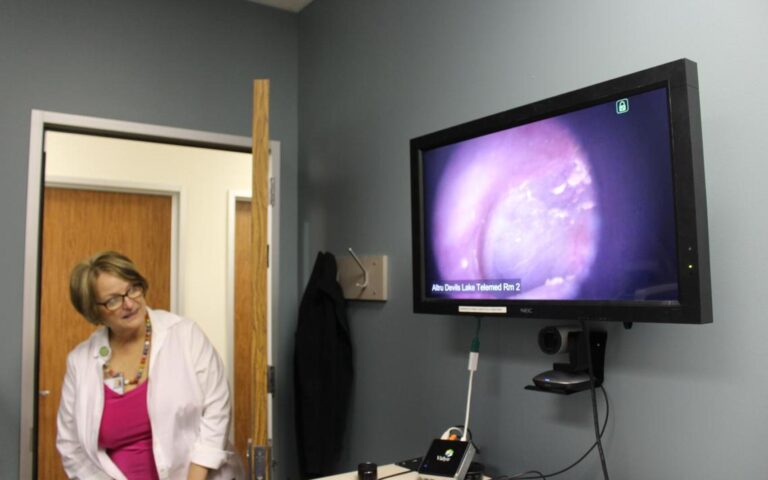Maybe you caught an episode. “Chasing the Cure,” a TNT/TBS medical mystery show, features ailments that seem unexplained — and asks the public to help.
One such mystery is Cathy, a Gulf War veteran with a persistent cough and hair loss. No one seems to be able to figure out what's wrong. But maybe a team of experts — and you, the viewer — can help?
“For the last 28 years, they've had test after test, X-ray after X-ray, blood tests, comb biopsies,” Cathy says in a taped segment on the show's website. “I've gotten all kinds of inhalers. It can work for about two or three days, and then this cough is strong. Like he grew muscles.”
The show brings together medical advice in a way that has only been possible in recent decades. It is, at its core, not just a show about its patients' perplexing ailments, but a window into how medicine is changing in the Internet age. Better diagnoses with big medical data, longer virtual doctor visits, and—yes—even the kind of collaborative diagnoses that bring doctors hundreds of miles together in a case are becoming easier with the advent of better, faster telecommunications technology.
For medical providers in the upper Midwest, technology has been marching forward – making all things possible – for decades and decades. Dr. Josh Crabtree, senior vice president of clinical operations for Sanford Health, points out that even some of the most basic changes in telecommunications have helped transform the profession.
“We can go way back and say that the telephone was a huge technological advance in the practice of medicine – we could just pick up a phone and call a consultant who was an hour away or halfway around the world,” he said. Crabtree. “But also through technology, not only can I now talk to them on the phone, but I can talk to them on a video screen.”
That kind of remote care is the conceit behind devices like Tyto Care, a home device that has a few basic tools — like a camera, thermometer and tongue depressor — and can help doctors examine patients remotely. Sanford's website boasts that it can even help doctors make a diagnosis and offer a prescription, all without the patient ever seeing a doctor in person.
For areas like North Dakota, these technologies, called “telemedicine,”
an increasingly important way of providing access to medical care. The Washington Post
that 80% of the rural United States is medically underserved, according to federal officials, with dim hopes for an increase in doctors. ONE
on file with the University of North Dakota's Center for Rural Health indicates that most of the state is a “geographic health care professional shortage area.”
Telemedicine is increasingly being used across the country. Altru Health System is also developing its own line of telemedicine services, which Mark Waind, executive vice president and chief information officer, said helps keep patients from driving long distances for care and prevents patients from going outside in inclement weather — when there is a video link with a nurse and a patient at one end and a doctor at the other will help medical professionals to assess the situation perfectly.
“When you look at the last four or five years, we've had a dramatic increase in the amount of telemedicine that we have,” Waind said.
The other big development, said Dr. Mark Weiser, Altru's chief medical officer, is the ways big medical data is starting to help doctors treat patients. Doctors haven't been replaced by AI yet, of course—but a wealth of medical data gathered by computers is starting to give doctors a deeper understanding of the likelihood that a patient is ready to be discharged, for example.
And, of course, there's plenty of collaboration that mirrors what happens on TV shows like “Chasing the Cure” — the Mayo Clinic Care Network, which is pretty much an expansive network of resources, including physician expertise, that providers can tap into healthcare in. According to the clinic's website, that includes things like e-consults, where doctors can turn to Mayo experts for advice about a patient, to health care consults, in which industry experts offer advice on “patient care, human human resources, finance and other administrative and operational areas'. Altru is a member.
But as with the telephone, some of the simplest advances in medical technology are some of the most transformative. Waind points out that patients entering the emergency room today already know more than most other patients.
“(Patients) are much more informed than ever before because you can google anything…. you can google a kidney stone or chest pain or elbow pain,” he said. “You can google what a fracture looks like.”


